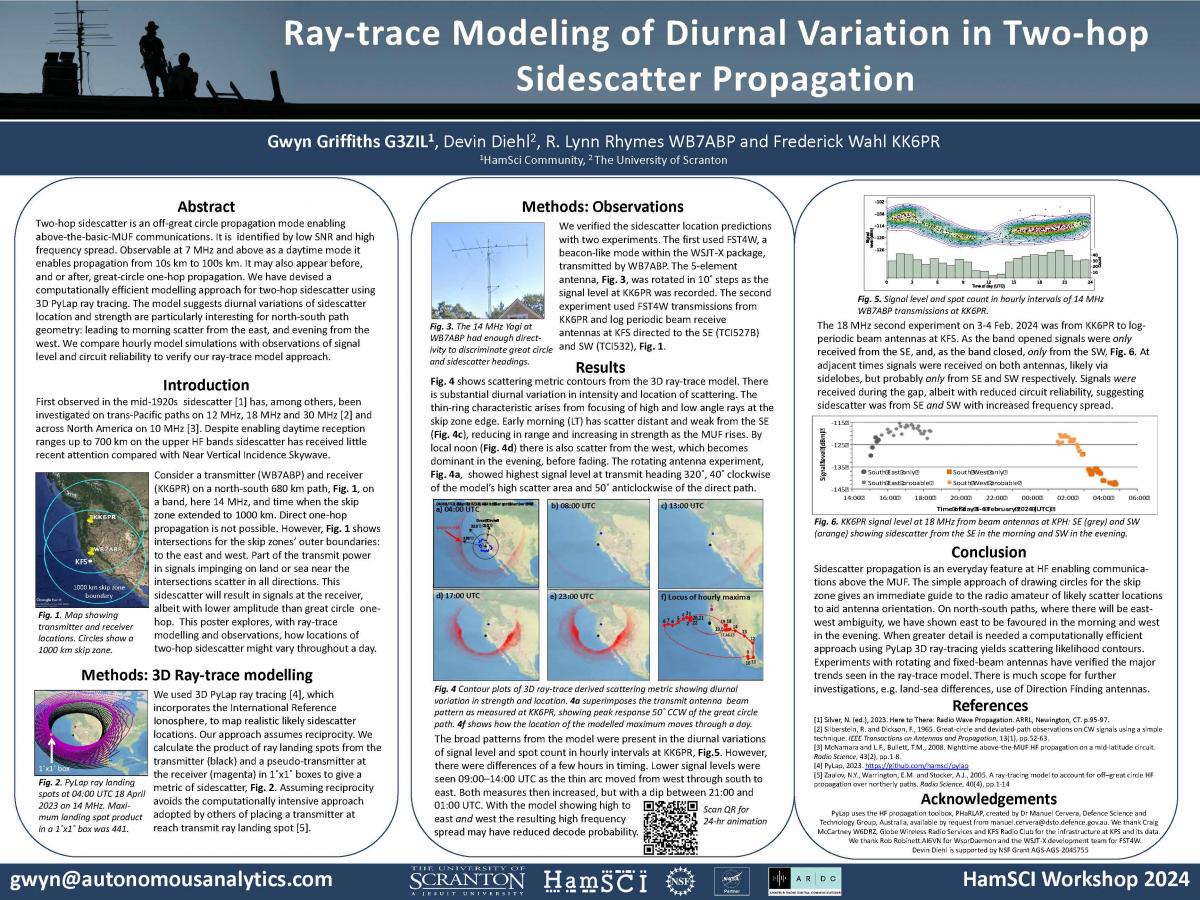| Title | Ray-trace modelling of diurnal variation in two-hop sidescatter propagation |
| Publication Type | Conference Proceedings |
| Year of Conference | 2024 |
| Authors | Griffiths, G, Diehl, D, R. Rhymes, L, Wahl, F |
| Conference Name | HamSCI Workshop 2024 |
| Date Published | 03/2024 |
| Publisher | HamSCI |
| Conference Location | Cleveland, OH |
| Abstract | Two-hop sidescatter, an off-great circle propagation mode enabling above-the-basic-MUF communications, is identified by low SNR and high spectral spread (width between -3 dB points). Observable at 7 MHz and above, as a daytime mode it enables propagation from 10s km to 100s km. Additionally, it may appear before, and or after, great-circle one-hop propagation as it operates with a lower F2 layer critical frequency. We have devised a computationally efficient modelling approach for two-hop sidescatter using 3D ray tracing. First, ray landing spots from a transmitter are found over 360° azimuth and a sensible range of elevations. Second, the process is repeated for a transmitter at the receiver. The key assumption is that reciprocity holds sufficiently to avoid the computationally demanding need to place a transmitter at every transmitter ray landing spot. A scattering metric, the product of the number of landing spots from transmitter and pseudo-transmitter in a 1°x1° area, is a useful approximation to the location and strength of the sidescatter. The off-great circle scattering location from the model has been verified by a rotating-antenna experiment at 14 MHz on paths from Northern California to Utah and Oregon using FST4W digital mode. The diurnal variations of sidescatter location and strength are particularly interesting for a meridional transmitter and receiver geometry: morning (local time) scatter from the east, from land on the California to Oregon path, with afternoon through nighttime scatter from the west, from the ocean. We discuss a qualitative comparison of hourly model simulations with signal level and circuit reliability data from FST4W spots. The nighttime minimum in both parameters is pronounced in the observations and model. An afternoon dip in circuit reliability, without reduction in signal level, is tentatively explained by the model showing strongest scatter alternating between east and west before settling to the west. We postulate that severe multipath scatter from both east and west, land and ocean, sufficiently increased frequency spread to reduce probability of decode for the ~6 Hz bandwidth FST4W mode. This study illustrates the usefulness of combining 3D ray tracing with purposeful observations to explain an underappreciated propagation mode. |
| Refereed Designation | Non-Refereed |
| Full Text |

